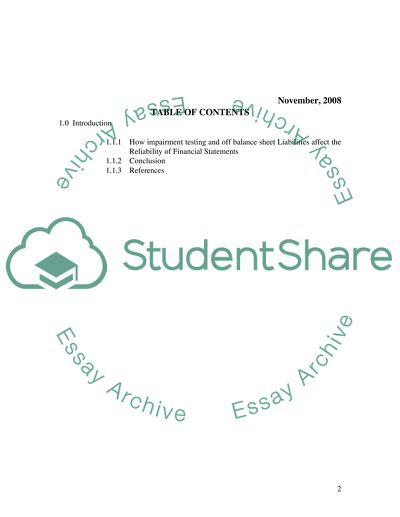Cite this document
(Affect Of Impairment Testing and Off-Balance Sheet Liabilities On Essay, n.d.)
Affect Of Impairment Testing and Off-Balance Sheet Liabilities On Essay. https://studentshare.org/finance-accounting/1509016-how-impairment-testing-and-off-balance-sheet-liabilities-affect-the-reliability-of-financial-statements
Affect Of Impairment Testing and Off-Balance Sheet Liabilities On Essay. https://studentshare.org/finance-accounting/1509016-how-impairment-testing-and-off-balance-sheet-liabilities-affect-the-reliability-of-financial-statements
(Affect Of Impairment Testing and Off-Balance Sheet Liabilities On Essay)
Affect Of Impairment Testing and Off-Balance Sheet Liabilities On Essay. https://studentshare.org/finance-accounting/1509016-how-impairment-testing-and-off-balance-sheet-liabilities-affect-the-reliability-of-financial-statements.
Affect Of Impairment Testing and Off-Balance Sheet Liabilities On Essay. https://studentshare.org/finance-accounting/1509016-how-impairment-testing-and-off-balance-sheet-liabilities-affect-the-reliability-of-financial-statements.
“Affect Of Impairment Testing and Off-Balance Sheet Liabilities On Essay”. https://studentshare.org/finance-accounting/1509016-how-impairment-testing-and-off-balance-sheet-liabilities-affect-the-reliability-of-financial-statements.


